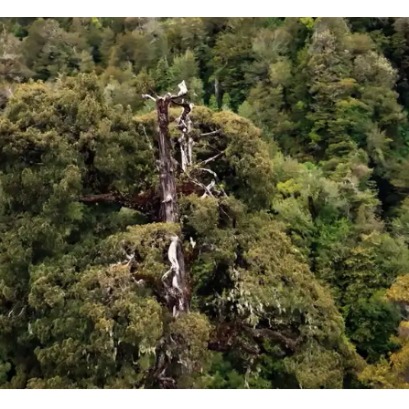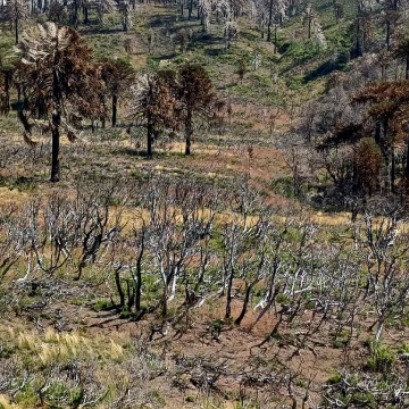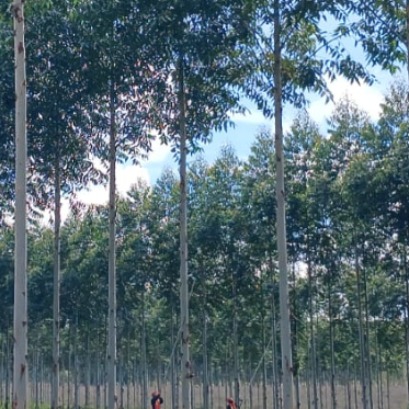
The threats that lurk to the oldest tree in the world
In the depths of a Chilean forest, the great grandfather stands, a tree of about 5,400 years. A highway project threatens its existence and that of the surrounding ecosystem. Empires have emerged and fallen, they have been born and fallen into oblivion languages, but this tree has resisted the passage of time: the great grandfather, around 5,400 years.
Jonathan Barichivich, a renowned Chilean scientist who works in France, grew in the rainy forest of Valdivia, who is now part of the Alerce Coastal National Park. His grandfather, Aníbal, discovered the great grandfather in 1972, while working as rangers. That moment, he says, changed the course of the history of his family and the tree. I said my first steps in this forest with my grandfather. He taught me the names of the plants even before I knew how to read, recalls Barichivich. The memories of my childhood are the fuel of my scientific passion. Forest, also known as Patagonian cypresses or fitzroya cuppressoids, not only manage to age more than many other trees. The species is also one of the most sensitive to climate trees. Each ring of its trunk is an annual meteorological record. The study of their rings allows researchers to rebuild climatic patterns that date back thousands of years ago. They are like encyclopedias, says Rocío Urrutia, a Chilean scientist who has been studying these trees decades. Their investigations have helped rebuild temperature records of 5,680 years ago. To determine the age of a tree, scientists of in statistical models that project the total number of rings, to reach an age range of the tree. The scientists also measure the amount of carbon that absorbs and emits the forest. The more the tree grows, the greater the space between the rings. And more growth means more carbon capture. These measurements are essential to understand how forests respond to global warming. Forests absorb approximately one third of our carbon emissions, explains Barichivich. But will it remain that way as the planet continues to heat up? Understanding how trees grow according to the different climatic patterns indicates how much carbon absorb, which is essential to predict if forests can continue to brake global warming in the warmest Threat to centenary trees. The authorities argue that the road would connect cities and boost tourism in the region. But there are critical voices that argue that this is, in reality, a smoke curtain. Connectivity is not the true reason, says Barichivich to DW, adds that there is another road nearby. But the new proposed road would link directly with the port of Corral, used by one of the largest cellulose exporters in Latin America. Muchos locals are convinced that the real objective is to open access to wood. The allerces are very valuable because of their lasting wood, high quality and straight growth. In addition, researchers such as Urrutia warn that, with the road, the risk of forest fires will increase. More than 90 percent of the regions fires begin near the roads, details. It is a worldwide phenomenon. In the Amazon, almost 75 percent of the fires begin less than five kilometers from a road, and, in the United States, 96 percent to less than 800 meters. Alerce is an endangered species, Urrutia warns. Each tree counts. A great fire could end the latest populations.
IT MAY INTEREST YOU
 Specialists from 10 provinces develop forest landscape restoration strategies throughout the country
Specialists from 10 provinces develop forest landscape restoration strategies throughout the country
The program is developed by researchers from INTA, Conicet and the Argentine Wildlife Foundation.
 Missions | New illegal felling in the Piñalito Provincial Park in San Pedro reveals the silent expansion of deforestation in protected areas
Missions | New illegal felling in the Piñalito Provincial Park in San Pedro reveals the silent expansion of deforestation in protected areas
The advance of deforestation on protected areas was once again evident this week in the Piñalito Sur Provincial Park, in San Pedro, where the Ministry of Ecology and Renewable Natural Resources confirmed a new case of selective illegal logging. The event occurs in a context of growing concern about the fragility of the environmental control system in rural and border areas, where the scarcity of resources, personnel and logistics limits the capacity of surveillance against criminal organizations organized to steal native woods and market them on the black market in connivance with sawmill owners.
 Paraguay | The plantations became instruments of territorial development and the generation of decent employment, INFONA highlights.
Paraguay | The plantations became instruments of territorial development and the generation of decent employment, INFONA highlights.
Plantings in different phases, control of ants and weeds, pruning and thinning, mechanized harvest, technology applied to the field and complete integration of the production cycle were part of the CREA Forestal proposal in its Technical Update Conference – JAT Forestal 2025. The event took place on Friday, November 14, at Estancia Ñemity, located in San Juan Nepomuceno, Caazapá, where agricultural producers, technicians, contractors, students and companies in the sector met to observe the forestry business of the future in action.





















